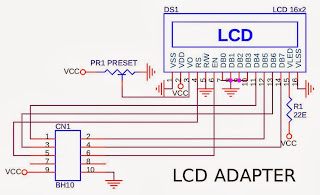Hi
Just to point out how you need to connect the Rotary Encoder and the 2 switches to make your DDS frequency synth to work
The Rotary encoder connects at J1 connector marked on the PCB. Pin#1 of J1 connects to GND and Pin#4 of the same connector connects to VCC (+5V). Pin#2/3 connect to the data pins.
In the figure shown below the Centre Pin is the GND/Common Pin and the other two pins go to the Data pin on the PCB. These type of connectors also have a inbuilt Push/Press switch, but right now we are not taking that into account , in our project.
So you can simply consider that the centre pin is #2 and the other two pins are 1/3.
This is the schematic Diagram of the Rotary Encoder + switch and the Pull-up resistors connected to the Data pins. As you can see that the Centre pin #2 is connected to GND (Pin@1/J1) and Pin#1/3 Connected to data pins , Pin#2/3 on J1. Vcc is obviously connected to the combined junction of the two pull-up resistors shown in the schematic diagram. The Back side two switch points are left NC (Not Connected).
There are two more switches that need to be connected to the project at J2 and the same philosophy applies. Pin#1@J2 is GND and Pin#4@J2 is VCC (+5V). Pin#2/3@J2 are the datapins which connect to the Switch with Pull ups.
These switches are used to jump between Frequency step size. Experiment to find out how this functions.
In short you will have to assemble these things separately on a vero board. My friend Ravi has assembled this thing on a Vero Board and maybe he can support my explanation with some photographs (Top/Bottom).
Hope you are now able to understand how to get the kit to work and hope to see your successful experimentation on the Blog.
Regards
Charudatt
Please Note:-
It is explained very thoroughly, i can not think of writing it more beautifully, so am reproducing the mail as it is.Thanks, De vu3inj, indrajitsinh
Those who require PCB and programmed PIC please contact Ravi Miranda https://www.facebook.com/groups/Indian.Homebrewers/





